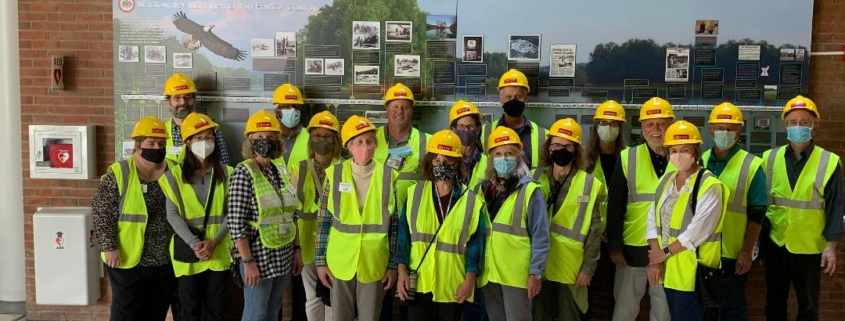Photo and article courtesy of Plant NOVA Natives
As Northern Virginia continues to celebrate trees to mark the start of the five year regional native tree campaign, autumn colors move to center stage. We may not get New England’s sudden (and brief) burst of color from the dominance of sugar maples, but our region makes up for it with the more gradual unfolding of a warm and lingering fall.
Most deciduous trees are best planted in the autumn, which conveniently coincides with the best time to choose a tree for its fall foliage. Trees are like people: within one species, there is plenty of variability, so if fall color is a high priority for you, this is the time to go shopping.
If your attention is drawn to a particular tree on a forested slope in Virginia, chances are you have spotted a Black Gum tree, whose red leaves positively glow in the sun. Other native trees with markedly red foliage include the Red Maples and the Scarlet and Shumard oaks. All these trees are eminently suitable for planting in a yard. Hickory trees have bright yellow foliage and tend to have planted themselves, as they are harder to find in nurseries because their deep tap roots makes it hard to dig them up. The muted red leaves of the Flowering Dogwood, Virginia’s state tree, provide a background for scarlet berries that are an important food source for migrating birds. This brings up two related subjects. The first is that it is important to choose native trees, as it is only plants that evolved within our local ecosystem that support that ecosystem. The second is that fall color is not just about foliage. The berries of many native plants, especially shrubs, ripen in fall and make a bright display that attracts birds to your yard. Many of those shrubs, such as blueberries, chokeberries, sumacs and native viburnums, also have brilliant fall foliage in their own right. Fall is also the time for the many species of the aptly named goldenrod and for the purples, blues, pinks, whites and even yellows of asters. Goldenrods and asters are the host plants for more species of caterpillars than any other perennials. But it is trees that support the most wildlife of all. If you only have the time and energy to plant one plant, let it be a native tree.
One of the fun things about our drawn-out autumn is watching the colors evolve over time. Certain patterns emerge. Sycamores start to fade well before summer’s end, with Dogwoods starting to turn rust red soon afterwards and Sassafras either red or gold. The brighter reds and yellows of canopy trees follow, with oaks being late to turn. Once those are shed, what is left is the light brown leaves of oaks and beeches that hold onto their leaves well into winter. The trees do not march in lock step, though, and there is plenty of variation from year to year, tree to tree, and even from branch to branch on the same tree. The Plant NOVA Trees website includes photos as well as a practical guide to choosing and planting native trees.
You might be thinking that when choosing a native tree, it might as well be one with bright red foliage. But consider that it is not a sea of red that makes autumn so beautiful but the quilt of contrasting red, gold, green and brown provided by the diversity of our woodland species. There are over fifty native species of trees to choose between in Northern Virginia, each of which plays its own important role in the beauty and the ecosystem of our region. Not only would it look odd to see only red trees, planting too many of one species puts the community at risk if disease strikes. Biodiversity is the key to resilience in a changing world.












